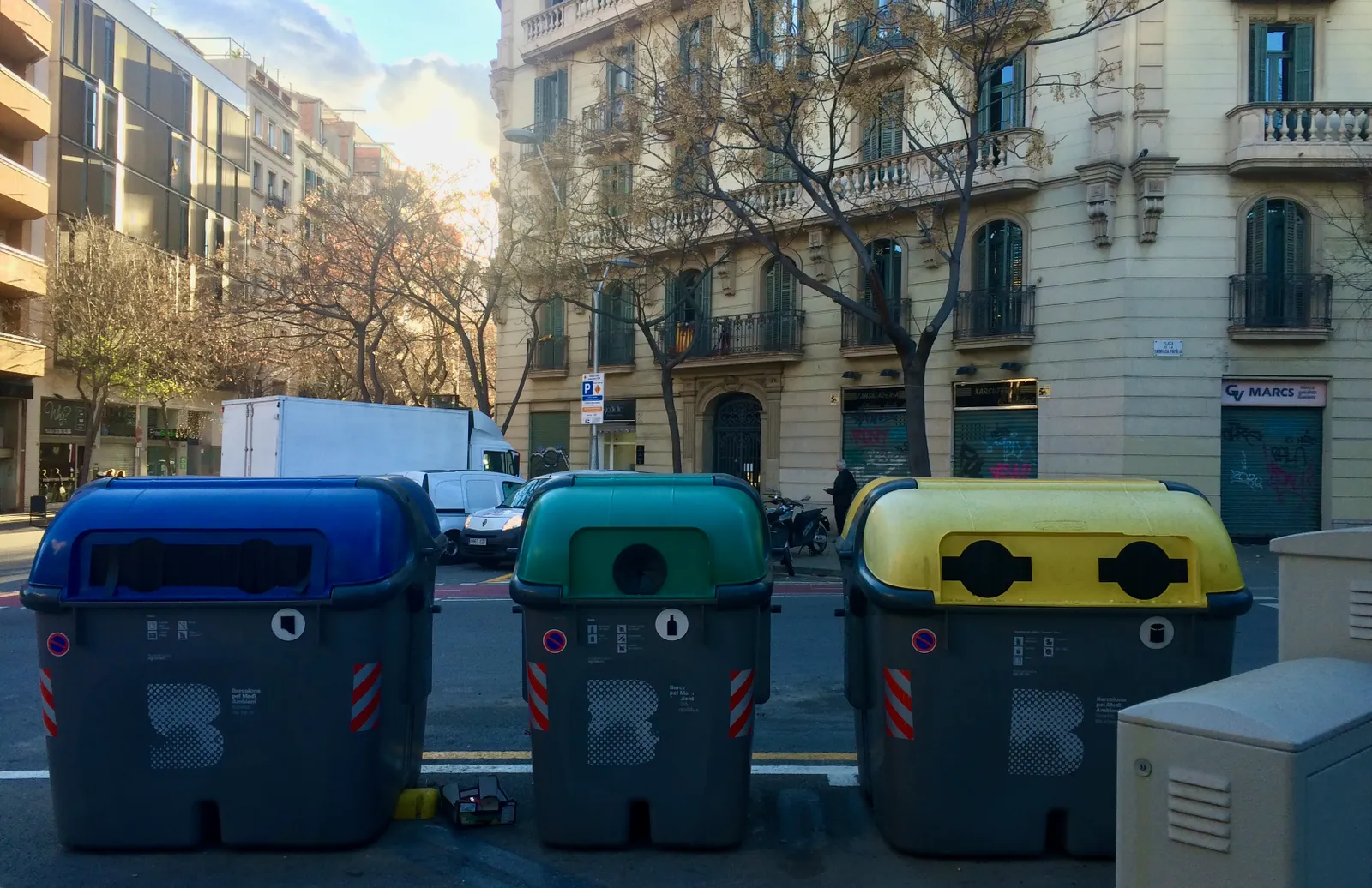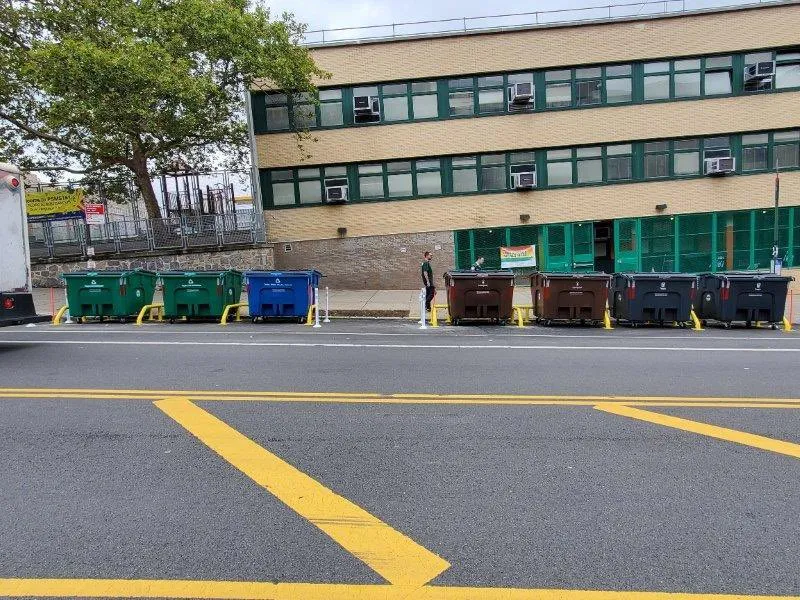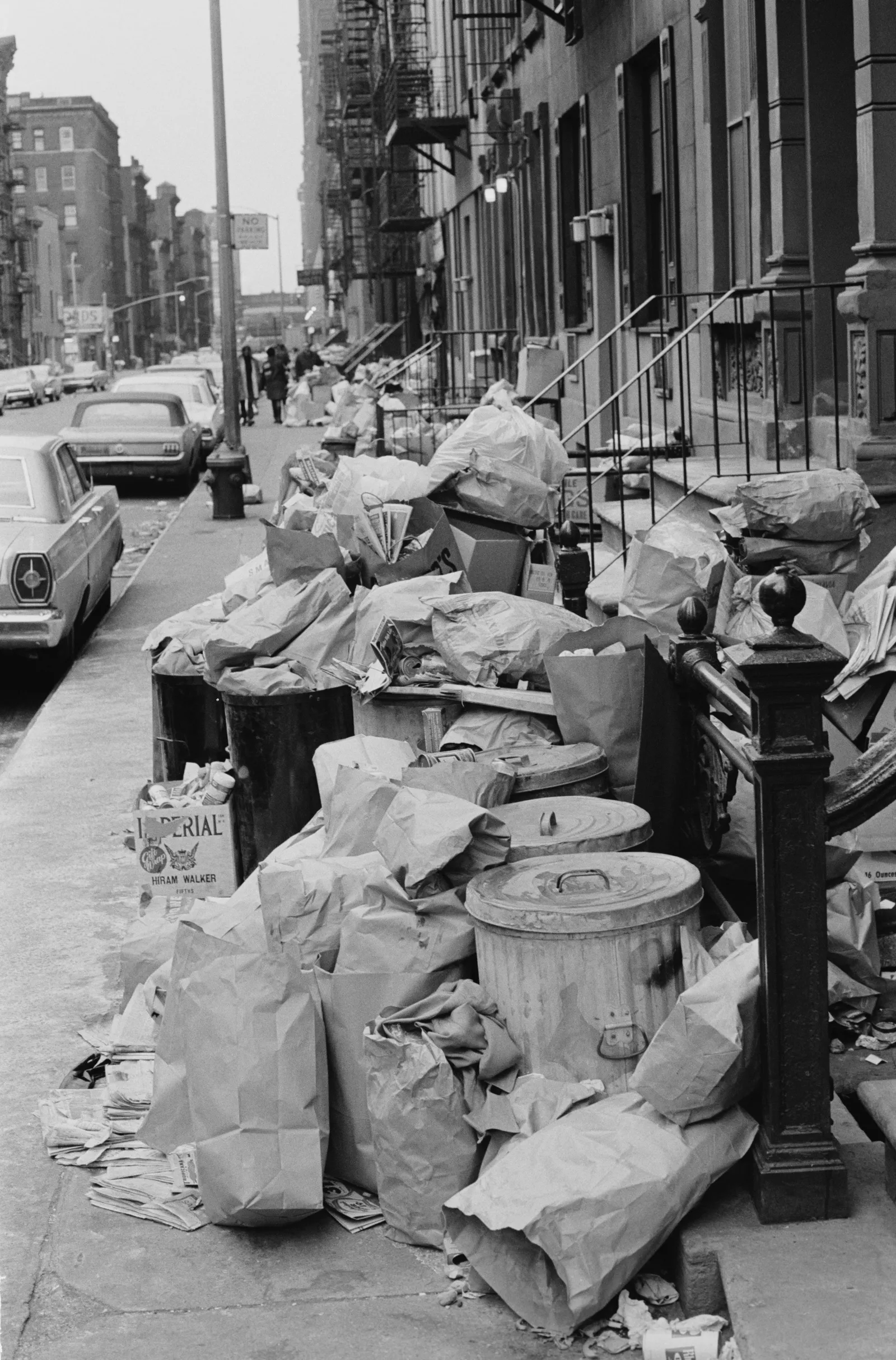New York City is in the midst of a major shift toward waste containerization after long being known for its mounds of garbage bags on the curb.
"All over the city we see them. They are a relic from the past of how they're lining our sidewalks,” said Mayor Eric Adams at a June press conference, linking the issue to rodents and quality of life. "New York City used to be known for our mean streets, but going forward we're going to be known for our clean streets."
In recent months, the city has advanced projects for waste containerization across residential locations serviced by the Department of Sanitation, commercial locations serviced by private haulers and public housing locations managed by the New York City Housing Authority.
DSNY’s latest pilot, a $5.6 million initiative that will deploy wheeled containers for 10 high-density residential blocks and 14 public school buildings, started rolling out in Manhattan’s West Harlem area this month. While some waste design experts have raised questions about the value of this pilot, in part because DSNY doesn’t view it as scalable, the agency has described it as a useful first step.
This all fits into a broader vision laid out in a May report from DSNY about how to containerize as much of the city’s waste as possible. Drawing on concepts from international cities, the report concluded in a note from Commissioner Jessica Tisch that “waste containerization is feasible in many parts of New York City,” though “it will not come easily.”
A major shift
DSNY manages a large share of the city’s overall waste through manual rear-load collection with a fleet of more than 2,000 trucks.
Bags are set out on the curb or within cans purchased by households. The system includes a refuse stream, a metal/glass/plastic stream, a paper/cardboard stream and will soon include an organics stream. Much of this happens at the curb due to a general lack of alleyways. The agency also manages an estimated 11% of waste through a combination of front-load or roll-off collection at schools, institutions and certain public housing locations.
The agency’s report found that individual bins can be a good fit for lower-density areas in the five boroughs, and DSNY’s fleet of rear-loaders could be modified with cart tippers.
It also found that larger wheeled containers could be collected the same way, but DSNY also notes concerns about public misuse, volume limits, collection obstructions and durability. No major city it surveyed uses wheeled containers as a leading option.
Looking at other types of shared containers, the agency said a Clean Curbs pilot it had supported for enclosures in the parking lane at certain locations was not scalable. It also decided that submerged containers were “unrealistic” because “a precise mapping of the location and depth of the infrastructure does not currently exist.”
The agency has turned its focus to stationary shared containers. Within that category, it has largely ruled out hoist collection as a scalable solution due to concerns about overhead clearance (though NYCHA is piloting a version of this system).
Instead, DSNY prefers automated side collection for these shared containers, which are more common in other countries. Due to complex factors around collection technology, the agency estimates this could add three to five years to implementation.

In the meantime, container placement and collection worker briefings are ongoing for the wheeled container pilot in West Harlem.
DSNY declined an interview request, citing scheduling conflicts. A spokesperson said that even though shared wheeled containers are not part of the agency’s long-term plan, the results will still be useful.
“We will be looking at how mechanized collection works for large on-street shared containers, particularly in the residential setting where it has never been done before in New York City. Shared on-street containers at schools and on residential blocks also raise new operational demands around the care and maintenance of containers. Critically, we will be closely monitoring residential adoption of shared containers and develop best practices for education and outreach for future rollouts,” wrote a spokesperson via email.

Different approaches
Experts say the U.S. waste market largely hasn’t taken the shared container approach before because it didn’t need to. Much of the country has space for other types of collection systems, unlike certain international cities.
"It is a marked difference in how we almost never used shared containers in our urban areas,” said Jeremy O’Brien, director of applied research at the Solid Waste Association of North America. "Historically, single-family residences have had their own containers, and then the multifamily have been serviced by commercial containers, so front-end loaders and roll-off containers."
For households with individual bins, O’Brien said automated side-load collection gained popularity within the last 20-plus years and continues to expand today. The use of larger containers for residential waste is more common in cities where multifamily collection (often defined as buildings with more than four to six units) is handled separately, either through an open-market system or government-managed franchise contract.

Piles of garbage bags started to become more common in New York following events such as a 1968 sanitation worker strike. According to Ben Miller, a waste historian and former DSNY policy planner, Union Carbide offered the city thousands of free plastic garbage bags to help with the crisis.
"These bags were seen as live-saving devices and that's how it started,” said Miller.
The New York City Council later moved to allow them, despite knowing about rodent issues. Clear bags were later allowed when the city rolled out curbside recycling, something Miller still regrets from his time at the agency because it further entrenched the bag system.
Today, Miller and Clare Miflin — founder of the Center for Zero Waste Design — are leading voices offering support for this latest push by Adams as well as critiques, suggesting a more nuanced approach when it comes to incorporating the concept into street design. In a June interview, and a subsequent article in Vital City, the two raised concerns that the agency’s West Harlem pilot is being done to show quick action but could ultimately affect public perception of containerization if it’s not successful.
“I don't think the pilot is going to work very well,” said Miflin, citing concerns such as the space required for bins. "I also think that what they came up with is too expensive."
The two are supportive of the agency’s stationary shared container concept, though they see individual bins as a more obvious place to start.
"Why not just start with that and you can cover half the city?” said Miller.
When asked about next steps on individual bins, including whether DSNY would supply standardized carts (as is common in many other parts of the country) or use its same specifications for resident-supplied bins, the agency said to stand by for further news.
As for the 11% of streets that DSNY says can’t be done, which account for an estimated 23% of overall residential waste, Miflin and Miller laid out a range of options they say could also work for certain high-density areas.
Suggestions include working with large buildings to push for higher-density compactors, which could transfer material into wheeled containers that would only be in the street temporarily. When collection would finish, that designated area of the street could also be used for deliveries, commercial waste collection or other needs.
When asked if it would revisit this challenging high-rise segment, DSNY said “we are certainly studying options for these streets.”
Editor’s note: Stay tuned for a follow-up story later this week that will delve into the labor, fleet, cost and implementation considerations involved in New York’s containerization shift.












